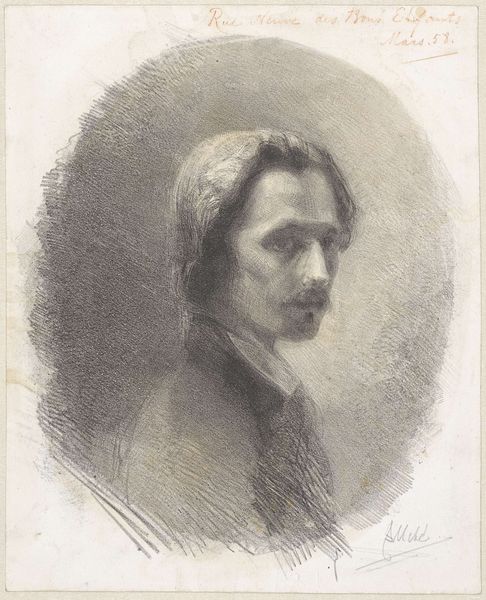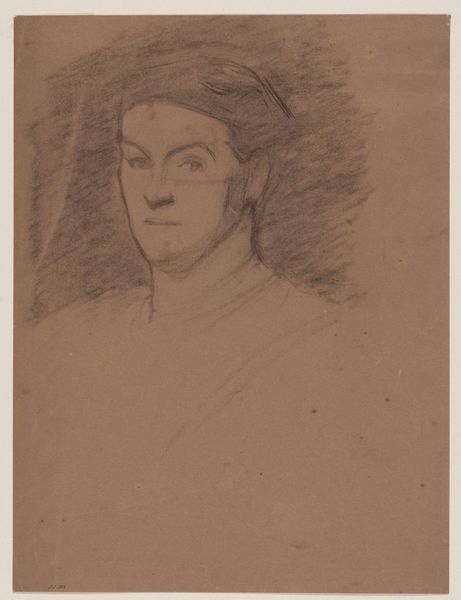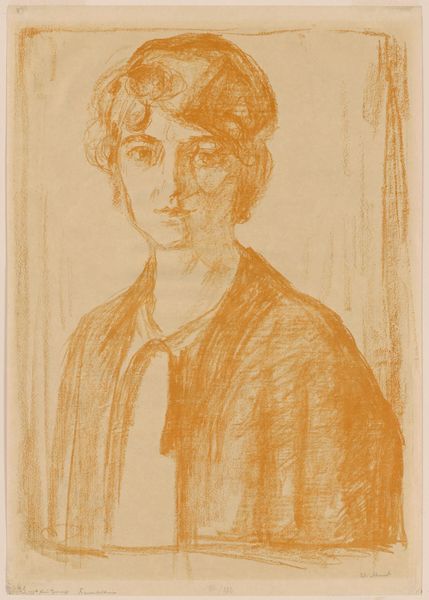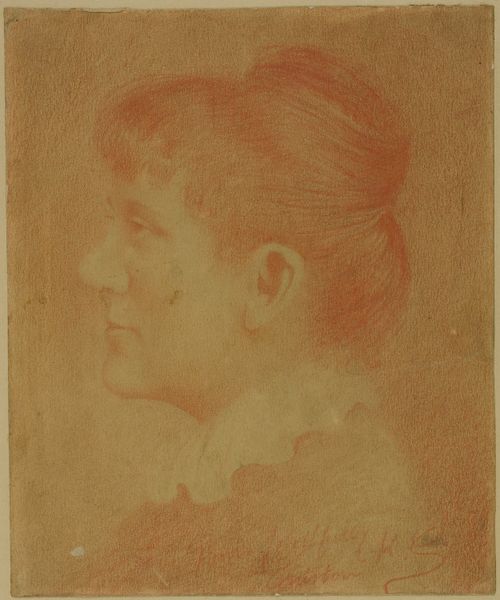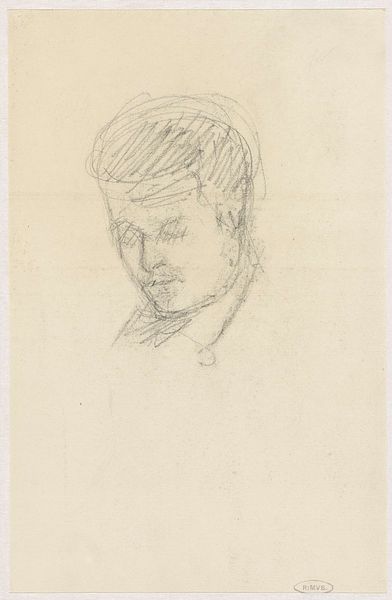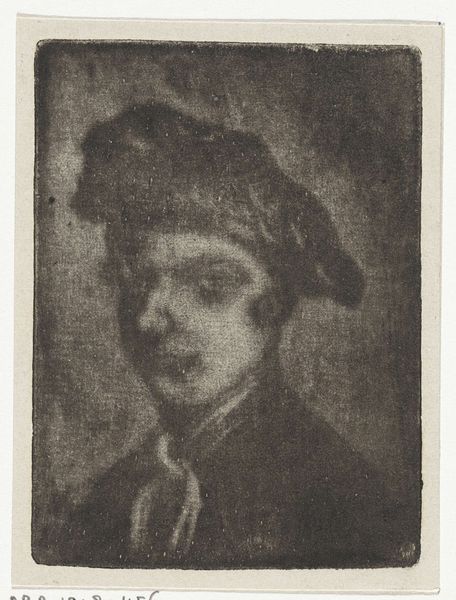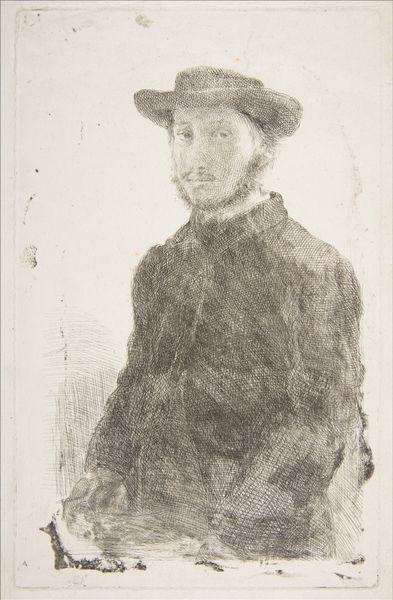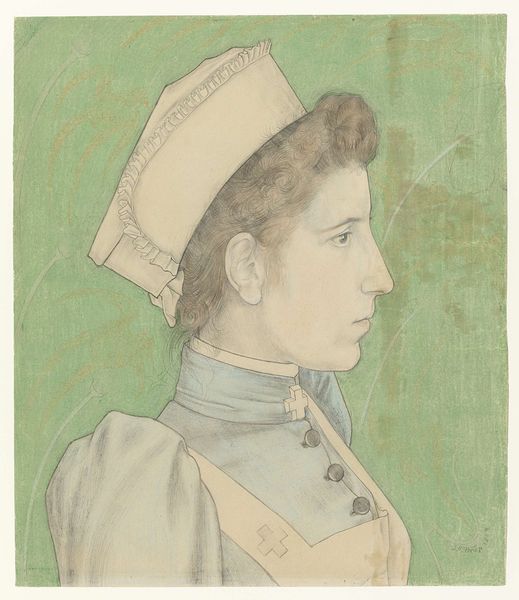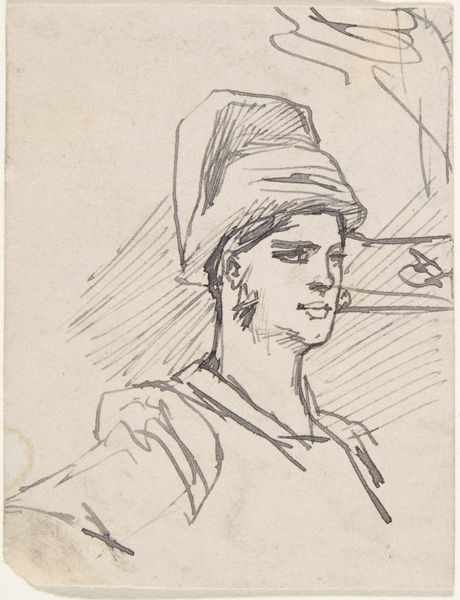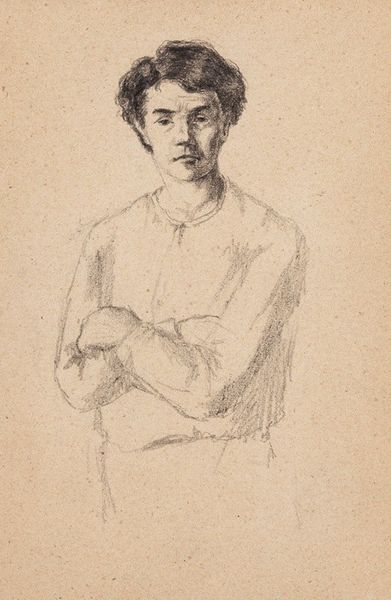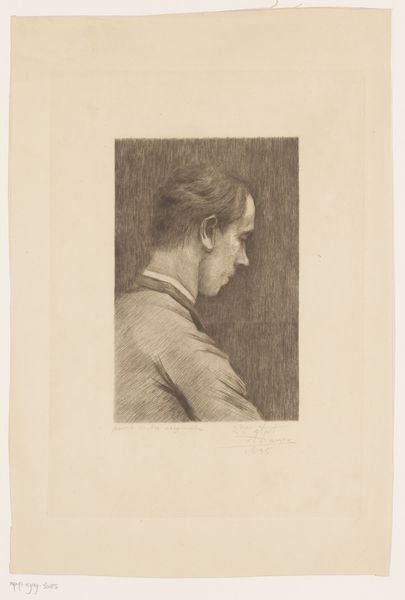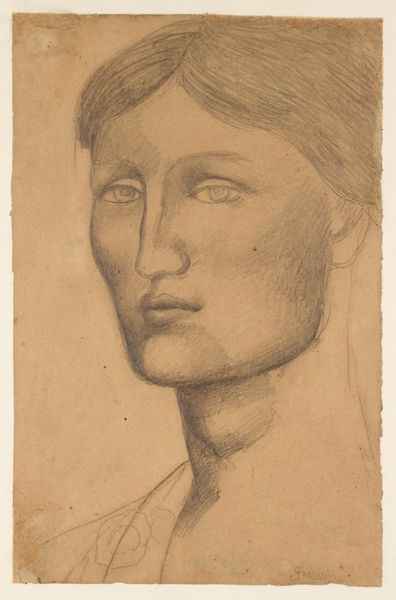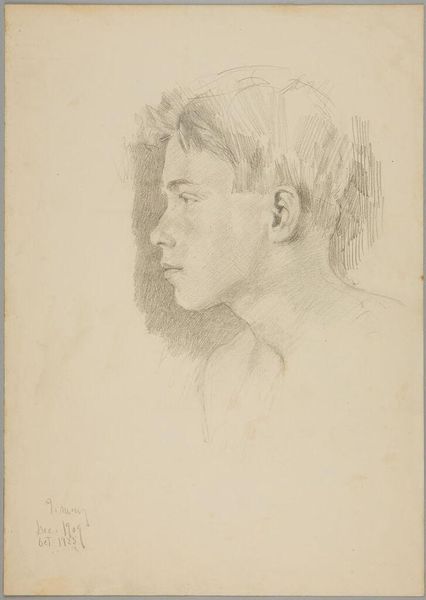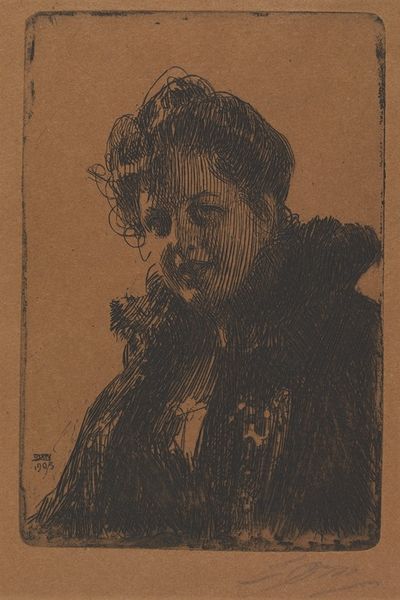
drawing, pencil
portrait
drawing
dutch-golden-age
pencil drawing
pencil
portrait drawing
watercolor
realism
Dimensions: height 286 mm, width 178 mm
Copyright: Rijks Museum: Open Domain
Editor: Here we have Richard Nicolaüs Roland Holst's "Portret van Kootje Martinet uit Loenen," a pencil drawing from sometime between 1878 and 1938. The limited use of watercolor gives it a subdued and somewhat melancholic air. I am curious – what are your thoughts on this piece? Curator: I see a fascinating interplay between material scarcity and artistic expression. The drawing is predominantly pencil on paper; even the slight watercolor accent underscores a careful and strategic use of available materials. I wonder about the socioeconomic conditions informing this choice. Was this austerity born out of necessity, a stylistic decision, or both? Editor: That's a perspective I hadn't considered. So you’re focusing less on the sitter's expression and more on the physical resources used to create it? Curator: Exactly. Think about the labor involved: the pencil marks, the careful layering. This isn't about grand narratives; it is a close look at how art is manufactured. It begs the question of how materials shaped the artwork and the accessibility, or lack thereof, influenced artistic choices in that particular era. Editor: Interesting. It prompts me to think about the role of patrons in the kind of resources available to artists. Curator: Precisely. Or the absence of them. Even the paper itself - is it mass-produced or handmade? It tells us something about consumption and production. This shifts our understanding of artistic value beyond just aesthetics, to incorporate elements of social history. Editor: So you're suggesting that looking at the materials and means of production can open a window into a whole other level of understanding art? Curator: Absolutely. It’s about seeing art as more than just a product; it's a record of labour and resources, deeply intertwined with society. Editor: This has opened up a new way for me to look at portraits. Thanks. Curator: Likewise. Examining the 'how' as much as the 'what' adds incredible depth.
Comments
No comments
Be the first to comment and join the conversation on the ultimate creative platform.
